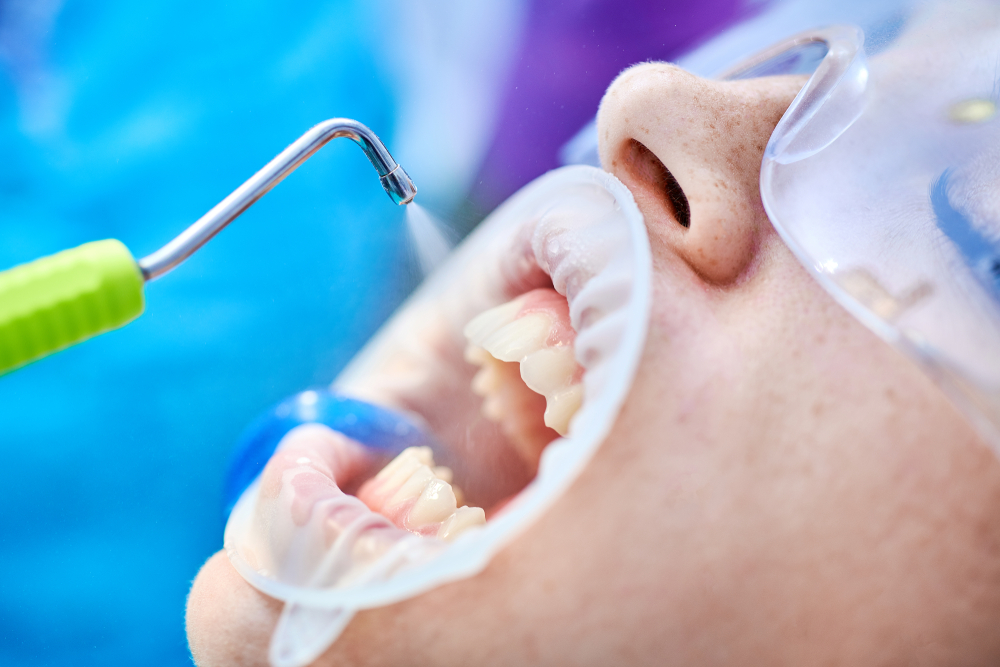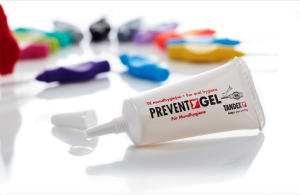Dealing with decay
Featured Products Promotional FeaturesPosted by: Dental Design 22nd March 2024

Air abrasion can prove a valuable adjunct to preventive dentistry
When it comes to preventive healthcare measures, Britain has a rich history. Edward Jenner developed the first smallpox vaccine in 1796. British scientists helped build the evidence base to establish the link between smoking and cancer during the 1950s. And in 2007, in England, it became illegal to smoke in enclosed public places.
A more recent example, and more pertinent to dentistry, has been the sugar tax (aka the UK soft drinks levy introduced in 2018). It was designed to reduce the sugar intake of children (thereby addressing the nation’s obesity and tooth decay problems) and it may just be yielding results.
According to a study published recently in BMJ Nutrition, Prevention & Health, researchers at the Medical Research Council Epidemiology Unit at Cambridge found that the levy may have reduced the number of under-18s having a tooth removed due to tooth decay by 12% (saving more than 5,500 hospital admissions for tooth extractions).[i]
As you know, preventive dentistry focuses on reducing the risk of decay (together with the prospect of gum disease and tooth loss) through preventative measures, or spotting it early so advice can be offered on how to treat it.
Air abrasion is a modern technique that is gaining in popularity. It involves the use of a fine stream of particles, such as aluminium oxide or silica, that are propelled by compressed air onto the tooth surface to remove decay, remove temporary cements, repair composite restorations, or remove stains. Unlike traditional drilling, air abrasion is minimally invasive and offers several benefits.[ii]
Healthy tooth structure
One of the key benefits of air abrasion is its ability to preserve healthy tooth structure. Traditional drilling requires the removal of healthy tooth structure along with the affected area. This can weaken the tooth and may require more extensive restorative procedures, such as dental fillings or crowns.[iii] In contrast, air abrasion selectively removes only the decayed or discoloured portions of the teeth, leaving the healthy tooth structure intact. This not only helps to preserve the strength of the tooth but also minimises the need for additional restorative work, resulting in a less invasive and more conservative treatment approach.
Air abrasion also eliminates the need for local anaesthesia in many cases.[iv] Traditional drilling often requires the use of local anaesthesia to numb the tooth and surrounding tissues, as it can cause discomfort and sensitivity. In contrast, air abrasion is relatively painless and does not generate the heat or vibration associated with drilling, making it possible to perform many preventive dental procedures without the need for anaesthesia. This is particularly advantageous for patients who have a fear of needles or dislike the feeling of numbness associated with local anaesthesia.
Vibration-free
 The process is generally less traumatic and more comfortable for patients too. Traditional drilling generates heat and friction, which can lead to discomfort and pain. Additionally, the noise and vibrations produced by the drill can cause anxiety and unease in some patients. Air abrasion, on the other hand, is a silent and vibration-free procedure, making it a more comfortable and relaxing experience. This can be especially beneficial for children[v] and individuals with dental phobia,[vi] as it can help to reduce their anxiety and improve their overall dental experience.
The process is generally less traumatic and more comfortable for patients too. Traditional drilling generates heat and friction, which can lead to discomfort and pain. Additionally, the noise and vibrations produced by the drill can cause anxiety and unease in some patients. Air abrasion, on the other hand, is a silent and vibration-free procedure, making it a more comfortable and relaxing experience. This can be especially beneficial for children[v] and individuals with dental phobia,[vi] as it can help to reduce their anxiety and improve their overall dental experience.
On top of these advantages, air abrasion also offers shorter treatment times.ii Traditional drilling can be time-consuming, as it requires multiple steps, such as anaesthesia administration, drilling, and filling. Air abrasion, on the other hand, is a relatively quick procedure, as it combines the removal of decay or stains with the application of preventive materials, such as dental sealants or fluoride varnishes, in a single step. This not only saves time for both the dental professional and the patient but also reduces the overall chair time and improves efficiency in the practice.
To help patients perform more effective at-home preventative oral care, consider recommending the FLEXI range of interdental brushes from  TANDEX to help keep plaque at bay. Available in 11 different sizes, there is a correct solution for each patient, ensuring a comfortable and effective clean. Each product’s handle is flexible, and the brush can be bent into the perfect shape to clean in between the posterior teeth. Additionally, FLEXIMax features an ergonomic handle for an even easier clean. Plus, FLEXI brushes can be used to easily apply PREVENT GEL, which contains 0.12% chlorhexidine and 900ppm fluoride for antibacterial and enamel strengthening properties.
TANDEX to help keep plaque at bay. Available in 11 different sizes, there is a correct solution for each patient, ensuring a comfortable and effective clean. Each product’s handle is flexible, and the brush can be bent into the perfect shape to clean in between the posterior teeth. Additionally, FLEXIMax features an ergonomic handle for an even easier clean. Plus, FLEXI brushes can be used to easily apply PREVENT GEL, which contains 0.12% chlorhexidine and 900ppm fluoride for antibacterial and enamel strengthening properties.
Air abrasion is a valuable tool in preventive dentistry due to its ability to preserve healthy tooth structure, provide precise treatment, eliminate the need for anaesthesia, offer a more comfortable experience for patients and reduce treatment times.
For more information on Tandex’s range of products,
visit https://tandex.dk/
Our products are also available from CTS Dental Supplies
https://www.cts-dental.com/
Author Kimberley Lloyd- Rees on behalf of Tandex
Kimberley graduated from the University of Sheffield in 2010, where she now works as a clinical tutor in Dental Hygiene and Therapy as well as working in practice. She has spent her career working across a variety of specialist private and mixed dental practices, for the MOD and volunteering her time to a dental charity in Nepal.
[i] Rogers, N T et al. Estimated impact of the UK soft drinks industry levy on childhood hospital admissions for carious tooth extractions: interrupted time series analysis. BMJ Nutrition Prevention & Health; 14 Nov 2023; DOI:10.1136/bmjnph-2023-000714 [Accessed December 2023]
[ii] Hegde VS, Khatavkar RA. A new dimension to conservative dentistry: Air abrasion. J Conserv Dent. 2010 Jan;13(1):4-8. doi: 10.4103/0972-0707.62632. PMID: 20582212; PMCID: PMC2883800. [Accessed December 2023]
[iii] Vujkov, S., Cveticanin, L. Effect of mass variation on vibration properties of the tooth in drilling operation. Sci Rep 12, 1691 (2022). https://doi.org/10.1038/s41598-022-05824-5 [Accessed December 2023]
[iv] Reduce anaesthesia with air abrasion. Br Dent J 200, 466 (2006). https://doi.org/10.1038/sj.bdj.4813550 [Accessed December 2023]
[v] Slabšinskienė E, Kavaliauskienė A, Žemaitienė M, Vasiliauskienė I, Zaborskis A. Dental Fear and Associated Factors among Children and Adolescents: A School-Based Study in Lithuania. Int J Environ Res Public Health. 2021 Aug 23;18(16):8883. doi: 10.3390/ijerph18168883. PMID: 34444632; PMCID: PMC8395053. [Accessed December 2023]
[vi] Appukuttan DP. Strategies to manage patients with dental anxiety and dental phobia: literature review. Clin Cosmet Investig Dent. 2016 Mar 10;8:35-50. doi: 10.2147/CCIDE.S63626. PMID: 27022303; PMCID: PMC4790493. [Accessed December 2023]
No Comments
No comments yet.
Sorry, the comment form is closed at this time.





